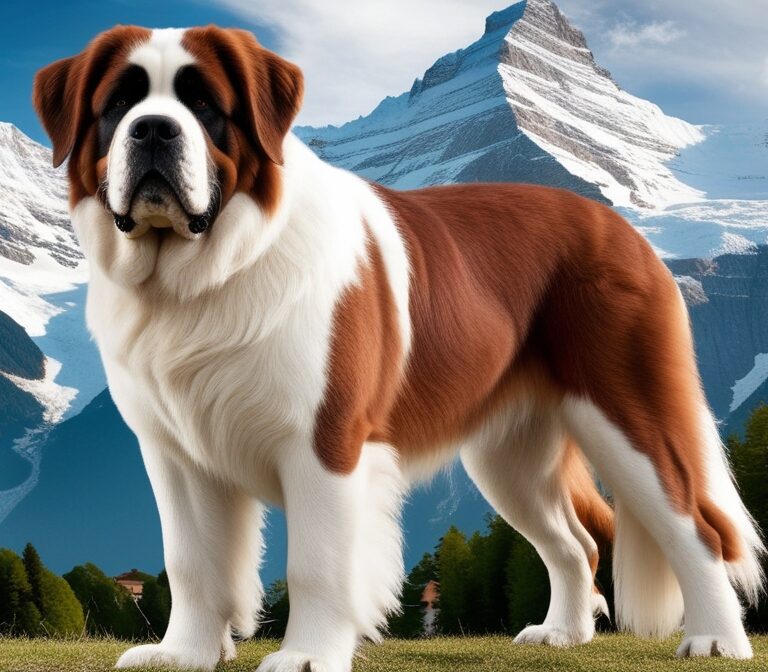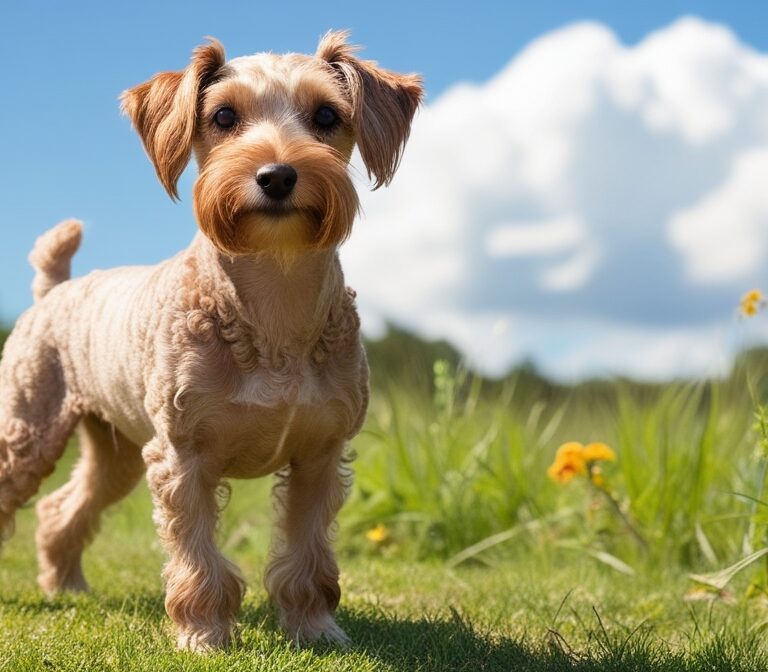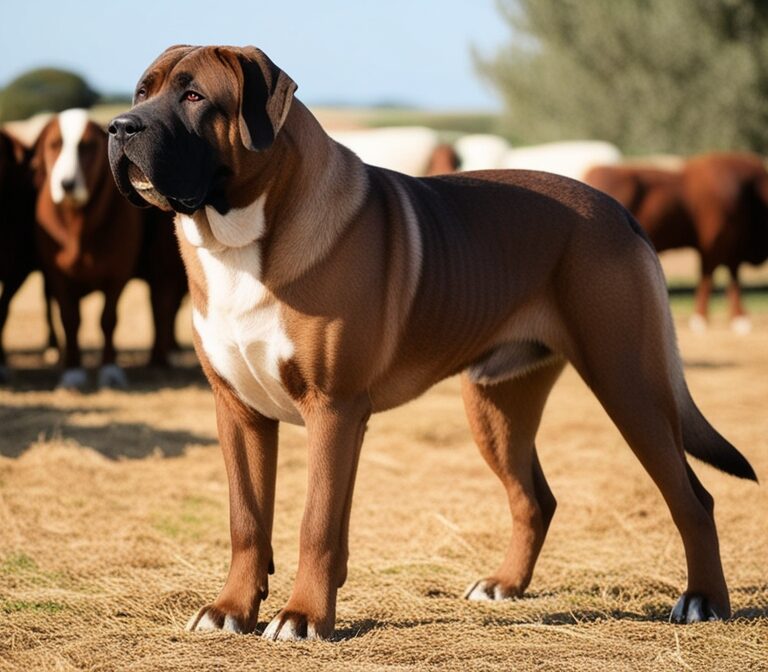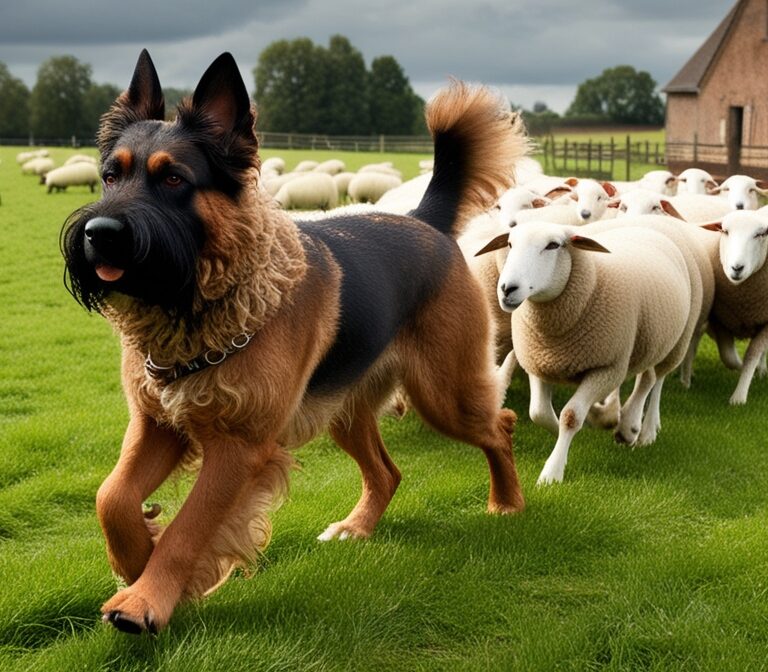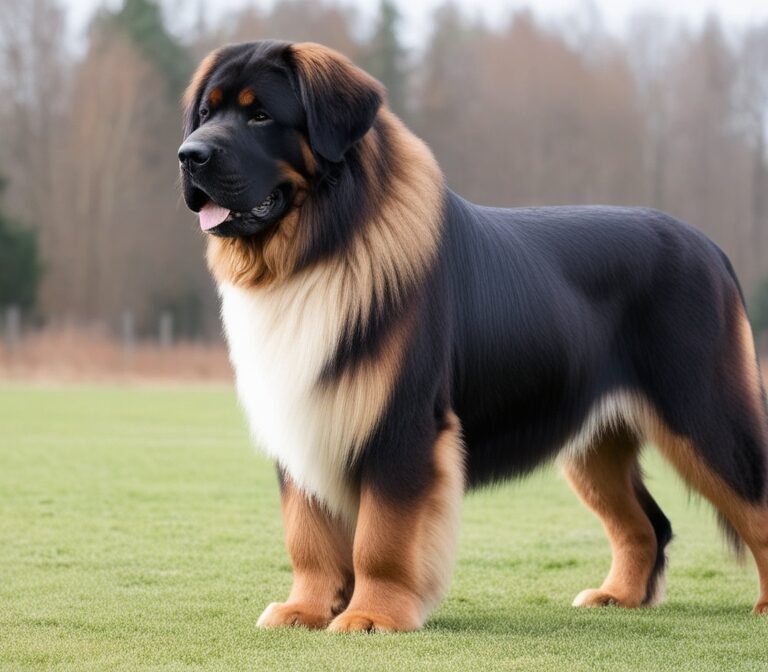Slovak Cuvac: Complete Guide to the Majestic Slovenský Čuvač Dog Breed
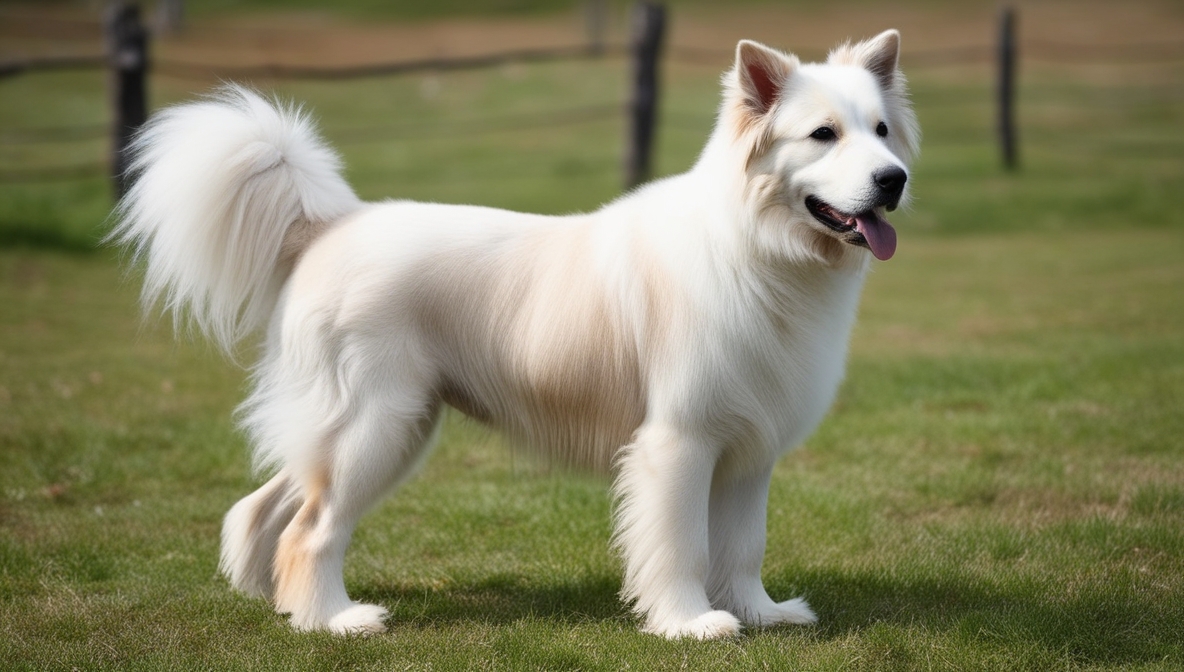
Introduction to the Slovak Cuvac
The Slovak Cuvac, also known as the Slovenský Čuvač, is a powerful livestock guardian dog native to Slovakia. Recognized for its thick white coat, large frame, and unwavering loyalty, this breed has been protecting herds and families in the Carpathian Mountains for centuries. Belonging to the working group of dogs, the Cuvac is often compared to other guardian breeds like the Great Pyrenees, Kuvasz, and Maremma Sheepdog, but it carries its own distinctive history and temperament.
This breed stands out not only for its physical strength but also for its protective instincts. Traditionally, it was raised alongside sheep, goats, and cattle, where it defended livestock against wolves, bears, and other predators. Today, while many Cuvacs still serve as farm protectors, an increasing number are kept as companion dogs due to their deep bond with human families.
The American Kennel Club (AKC) and Fédération Cynologique Internationale (FCI) recognize this breed, establishing strict standards regarding its height (62–70 cm for males, 59–65 cm for females) and weight (36–44 kg for males, 31–37 kg for females). These standards ensure the preservation of its historical form and working ability.
Despite its many strengths, the Slovak Cuvac is not the ideal dog for everyone. Its strong guarding instincts require experienced owners who can manage its training, exercise, and socialization needs. Families living in rural or suburban areas may find the breed more suitable than apartment dwellers, as these dogs thrive when given space and purposeful tasks.
In this guide, we’ll explore the Slovak Cuvac in depth — from its origins in Slovak shepherd culture to its modern role as both a farm guardian and loyal family companion. You’ll learn about its appearance, temperament, training needs, health concerns, grooming care, and adoption options. Whether you’re considering ownership or simply fascinated by rare guardian breeds, this article provides the comprehensive insights you need.
History and Origin of the Slovenský Čuvač
The history of the Slovak Cuvac stretches back hundreds of years, deeply intertwined with the pastoral traditions of Slovakia. Originating in the Tatra Mountains and Carpathian region, the breed was developed to guard sheep and livestock from wolves and bears. Shepherds relied on these fearless dogs as partners in survival, often trusting them more than fences or weapons.
Written records of the breed trace back to the 17th century, though oral traditions suggest it existed long before. The name “Čuvač” comes from the Slovak word “čuvat,” meaning “to hear” or “to listen” — a fitting name for a breed known for its vigilance. Always alert, the dog could detect predators or intruders long before humans noticed.
Historically, the Slovak Cuvac was not just a farm worker but also a family guardian. Shepherd families kept them close to protect children and homes. Their white coat was deliberately bred to distinguish them from predators at night, preventing accidental attacks by shepherds or hunters.
The breed nearly disappeared during the early 20th century due to declining pastoralism and the world wars. Fortunately, Slovak enthusiasts revived the breed, and in 1965, the Fédération Cynologique Internationale (FCI) officially recognized the Slovenský Čuvač as a distinct dog breed. The American Kennel Club (AKC) later followed, placing it in the Working Group.
Today, while its population remains relatively small compared to global favorites like the German Shepherd or Golden Retriever, the Slovak Cuvac is cherished in Slovakia, Poland, Hungary, and beyond. It represents not only a functional guardian dog but also a living cultural symbol of Slovak heritage.
The breed’s legacy of strength, loyalty, and resilience continues to make it a preferred choice among farmers, ranchers, and dedicated dog enthusiasts who value its authentic working abilities.
Role in Slovak Shepherd Culture
For Slovak shepherds, the Slovak Cuvac was more than just a dog — it was an essential member of the pastoral lifestyle. In the mountainous Tatras, where wolves and bears threatened sheep, goats, and cattle, a guardian breed was indispensable. The Čuvač served as that protector, patrolling the flock’s perimeter and fearlessly confronting predators.
Shepherd culture in Slovakia emphasized harmony between man, dog, and herd. Unlike herding dogs that drive sheep, the Čuvač worked independently, observing from high ground and responding to threats with immediate action. Their protective instinct developed naturally, requiring minimal training to perform their role.
The Slovak Cuvac also held spiritual significance. In folklore, it was considered a symbol of purity, courage, and loyalty. Its white coat was associated with light and protection, making it a guardian not only of livestock but of homes and villages.
Even in modern times, traditional shepherds in rural Slovakia still rely on the Slovak Cuvac to defend their herds. This enduring practice preserves a direct cultural link between the ancient pastoral way of life and contemporary agriculture.
Connection to the Carpathian Mountains
The Carpathian Mountains, spanning Slovakia and neighboring countries, shaped the evolution of the Slovak Cuvac. This rugged environment, marked by harsh winters, predators, and steep terrain, demanded a dog breed with endurance, courage, and adaptability.
The white-coated Cuvac blended perfectly with snowy landscapes, making it difficult for predators to spot but easy for shepherds to identify. Its thick double coat served as natural insulation, allowing it to withstand subzero temperatures while maintaining vigilance through the night.
This breed’s development parallels other mountain guardian dogs like the Great Pyrenees (Pyrenean Mountain Dog) in France, the Maremma Sheepdog in Italy, and the Kuvasz in Hungary. Each evolved independently, yet shared similar adaptations due to common environmental pressures.
The Carpathian heritage of the Slovak Cuvac ensures its lasting reputation as a fearless livestock protector and a testament to Slovakia’s natural and cultural landscape.
Physical Characteristics of the Slovak Cuvac
The Slovak Cuvac is an imposing livestock guardian breed with a striking appearance. At first glance, it stands out because of its thick, fluffy white coat, which is both a practical adaptation and a defining feature. According to FCI and AKC breed standards, males typically stand 62–70 cm (24–28 inches) at the shoulder, while females are slightly smaller at 59–65 cm (23–26 inches). Weight ranges from 36–44 kg (79–97 lbs) in males and 31–37 kg (68–81 lbs) in females.
Its muscular, well-proportioned build reflects its working origins. The Cuvac is not overly bulky but instead combines strength with agility, enabling it to navigate the rocky terrains of the Carpathians with ease. Its chest is deep and broad, giving it the endurance to work long hours guarding flocks. The tail is typically long and bushy, often carried in a gentle curve when alert.
The coat is a dense double layer: a soft undercoat that provides insulation and a longer, harsher outer coat that repels dirt, water, and snow. This adaptation ensures the dog’s survival in harsh winters, where temperatures in the mountains often drop below freezing. Importantly, the breed standard requires the coat to be solid white, a feature deliberately preserved to help distinguish the dog from predators such as wolves during nighttime patrols.
The head of the Slovak Cuvac is strong and noble, with a broad skull, slightly tapering muzzle, and dark, almond-shaped eyes that exude alertness and intelligence. Ears are medium-sized, set high, and carried close to the head. These features give the dog an expression of calm vigilance, signaling both friendliness toward its family and readiness to confront intruders.
Unlike some large breeds bred purely for looks, the Slovak Cuvac maintains a functional physique. Every part of its body structure — from its thick paw pads to its sturdy limbs — is built for protection, endurance, and adaptability in tough environments.
For owners, understanding these physical traits is essential. The dog’s size and energy levels require adequate space, exercise, and nutrition, while its heavy coat demands consistent grooming. These characteristics make the Slovak Cuvac a majestic but demanding breed, best suited to experienced handlers.
Height and Weight Standards
Breed standards ensure the preservation of the Slovak Cuvac’s functional working qualities. As mentioned, males range from 62–70 cm in height and 36–44 kg in weight, while females measure 59–65 cm tall and weigh 31–37 kg.
These proportions are carefully maintained to balance strength and mobility. A dog that is too heavy may lack agility, while one too small may fail to deter predators. By adhering to these standards, breeders ensure that the Slovak Cuvac remains capable of its traditional role as a livestock guardian.
It is worth noting that sexual dimorphism is evident in the breed. Males are generally larger, with more pronounced muscular builds and slightly broader heads. Females, though smaller, retain the same endurance and protective instincts, often excelling in nurturing roles when integrated into family homes.
Puppies grow quickly, often reaching half of their adult weight by six months of age. However, full maturity in terms of skeletal and muscular development may not occur until 18–24 months. Owners must be mindful of joint health during growth stages, avoiding excessive jumping or overexertion, which can strain developing bones.
Compared to similar breeds, the Slovak Cuvac falls into the medium-to-large guardian category, slightly smaller than the Great Pyrenees but comparable in size to the Hungarian Kuvasz. This makes it large enough to intimidate predators yet compact enough for endurance and agility in rugged mountain terrain.
Maintaining proper weight is crucial for long-term health. Obesity can exacerbate hip dysplasia and joint problems, conditions common among large breeds. A balanced diet, regular exercise, and portion control help keep the Slovak Cuvac within its ideal weight range.
In summary, the height and weight standards are not merely cosmetic benchmarks but rather functional guidelines, ensuring the Slovak Cuvac remains the effective, balanced guardian dog it was bred to be.
Coat and Appearance
The coat of the Slovak Cuvac is arguably its most recognizable feature. This luxurious white fur not only enhances the breed’s majestic appearance but also plays a practical role in survival. The double coat consists of a thick, insulating underlayer and a longer, coarse outer coat. This combination makes the dog nearly impervious to snow, wind, and freezing temperatures, enabling it to perform year-round guarding duties in the Carpathians.
The coat length varies slightly depending on the dog’s genetics and environment, but it typically grows medium to long. On the neck, chest, and tail, the hair is especially dense, giving the dog a regal lion-like mane. This extra volume provides protection against bites during predator encounters.
A key element of the breed standard is that the coat must be pure white. Historically, this served two purposes: (1) shepherds could easily differentiate the Cuvac from wolves or bears at night, reducing the risk of accidental injury, and (2) the white coloring symbolized purity and trustworthiness in Slovak folklore. Any markings or deviations from the solid white standard are considered disqualifying faults in official dog shows.
Beyond coat color, the Slovak Cuvac possesses an overall appearance of strength and nobility. The breed’s dark eyes and black nose contrast beautifully with the snowy coat, while its strong legs and deep chest project an image of readiness and stamina.
In practical ownership terms, the coat requires frequent grooming to prevent matting and reduce shedding. Weekly brushing is essential, especially during seasonal changes when shedding increases. While the coat is self-cleaning to some degree, regular maintenance keeps the dog looking healthy and prevents tangles.
The combination of its pure white coat, balanced physique, and confident demeanor makes the Slovak Cuvac an unmistakable presence. Whether guarding a flock in the mountains or accompanying a family in the countryside, its appearance embodies both elegance and power.
Distinguishing Features Compared to Other Breeds
The Slovak Cuvac is often compared to other white livestock guardian breeds, but it has several unique characteristics that set it apart. At a glance, many confuse it with the Great Pyrenees, Hungarian Kuvasz, or Maremma Sheepdog — all of which share similar roles and appearances. However, subtle differences exist.
- Great Pyrenees: Larger overall, with thicker bone structure and a more mellow temperament. The Cuvac, while slightly smaller, tends to be more agile and active.
- Kuvasz: Similar in size but has a more wavy coat and a reputation for being more aloof with strangers. The Cuvac tends to form closer bonds with its family while retaining independence.
- Maremma Sheepdog: Comparable in height, but the Maremma has a harsher outer coat. The Slovak Cuvac’s coat tends to be slightly softer and denser, particularly around the chest and mane.
- Polish Tatra Sheepdog: Nearly identical in build, but the Tatra has a more rounded head and calmer disposition, whereas the Cuvac shows greater alertness and sharpness in guarding.
Other distinguishing traits include its alert expression, solid white coat without markings, and cultural origin in Slovakia. Its temperament also sets it apart: while it shares the guardian instinct with these breeds, the Cuvac combines independence with an unusually deep loyalty to its human family.
For enthusiasts and potential owners, recognizing these differences is important. While all guardian breeds share certain protective instincts, the Slovak Cuvac brings a unique blend of athleticism, sharp alertness, and strong cultural heritage, making it one of the most distinct livestock guardian dogs in the world.
Conclusion:
The Slovak Cuvac is a breed that embodies both heritage and functionality. Rooted in the pastoral traditions of Slovakia, this dog has been shaped by centuries of working alongside shepherds in the Carpathian Mountains, protecting flocks from wolves, bears, and intruders. Its thick white coat, large build, and courageous temperament make it not only a powerful guardian but also a symbol of loyalty and cultural pride.
However, potential owners must recognize that the Slovak Cuvac is not a casual pet. This is a working guardian breed that thrives when it has a clear purpose — whether that means protecting livestock on a farm, serving as a family watchdog in a rural setting, or guarding property in suburban environments with enough space. Apartment living or low-activity households are unsuitable, as the dog’s energy, independence, and protective instincts require room to roam and tasks to fulfill.
From a family perspective, the Slovak Cuvac can be an excellent companion. It bonds deeply with its human pack, showing unwavering loyalty and protectiveness. With children, it tends to be patient and nurturing, though early socialization and training are essential to prevent over-guarding tendencies. With strangers, it may remain reserved or suspicious, which is a natural part of its guardian instinct.
In terms of care requirements, ownership demands commitment. The dense double coat requires regular grooming, particularly during shedding seasons. Its size and working heritage mean that the breed needs daily exercise and mental stimulation to stay balanced. Health concerns such as hip dysplasia and joint issues also require proactive management through diet, veterinary care, and responsible exercise routines.
Financially, the Slovak Cuvac can be more costly to maintain compared to average dogs due to its dietary needs, grooming, and veterinary expenses. Adoption or purchasing from reputable breeders also requires careful research, as this is a relatively rare breed outside of Central Europe.
Ultimately, the Slovak Cuvac is the right choice for individuals or families who:
- Live in rural or suburban areas with sufficient space
- Value a protective and loyal family guardian
- Have the time and dedication for training, exercise, and grooming
- Appreciate the cultural heritage and working spirit of this traditional Slovak breed
For those who meet these conditions, the Slovak Cuvac offers an unparalleled combination of strength, loyalty, and companionship. More than just a dog, it is a guardian, partner, and living piece of Slovak history.
In conclusion, if you are looking for a majestic working dog that combines protective instincts with unwavering devotion, the Slovak Cuvac may be the perfect breed for you. With the right environment and care, it will reward you with a lifetime of loyalty, courage, and companionship that few other breeds can match.
